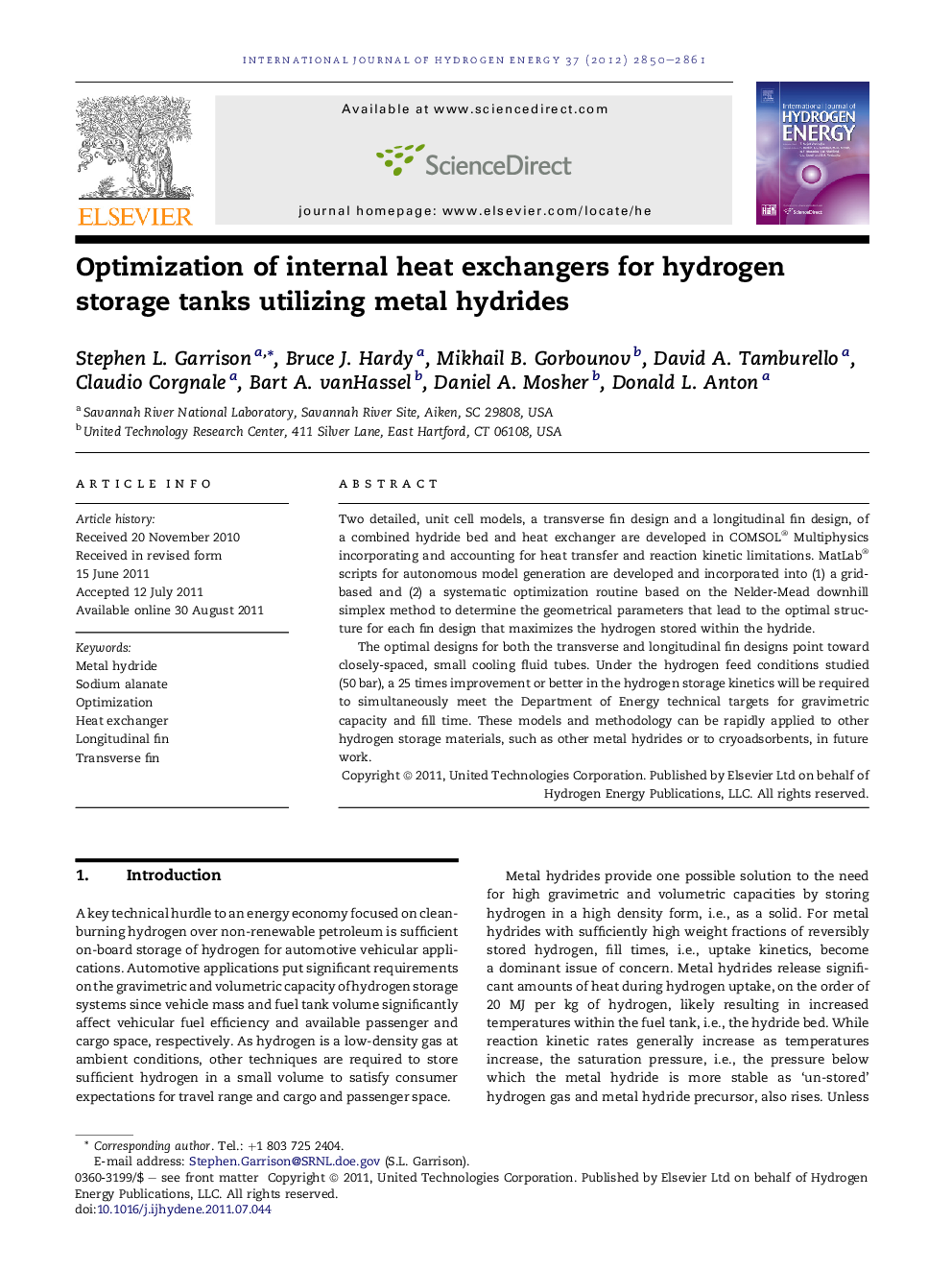| Article ID | Journal | Published Year | Pages | File Type |
|---|---|---|---|---|
| 1271712 | International Journal of Hydrogen Energy | 2012 | 12 Pages |
Two detailed, unit cell models, a transverse fin design and a longitudinal fin design, of a combined hydride bed and heat exchanger are developed in COMSOL® Multiphysics incorporating and accounting for heat transfer and reaction kinetic limitations. MatLab® scripts for autonomous model generation are developed and incorporated into (1) a grid-based and (2) a systematic optimization routine based on the Nelder-Mead downhill simplex method to determine the geometrical parameters that lead to the optimal structure for each fin design that maximizes the hydrogen stored within the hydride.The optimal designs for both the transverse and longitudinal fin designs point toward closely-spaced, small cooling fluid tubes. Under the hydrogen feed conditions studied (50 bar), a 25 times improvement or better in the hydrogen storage kinetics will be required to simultaneously meet the Department of Energy technical targets for gravimetric capacity and fill time. These models and methodology can be rapidly applied to other hydrogen storage materials, such as other metal hydrides or to cryoadsorbents, in future work.
► Detailed, on-the-fly, H2 storage bed models constructed in COMSOL® Multiphysics. ► Models account for limitations in heat transfer and reaction kinetics simultaneously. ► Systematic optimization of bed gravimetric capacity by linking to MatLab® routines. ► Methodology applies to any simulation-based engineering system, not solely H2 storage.
